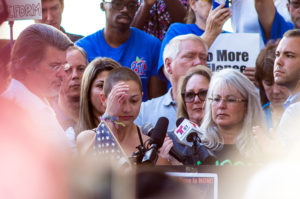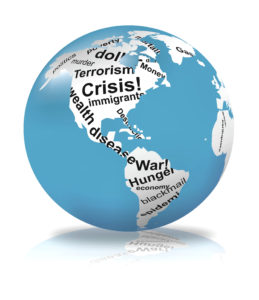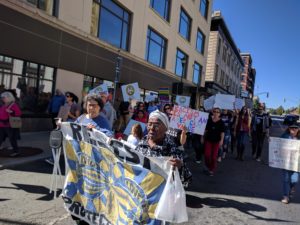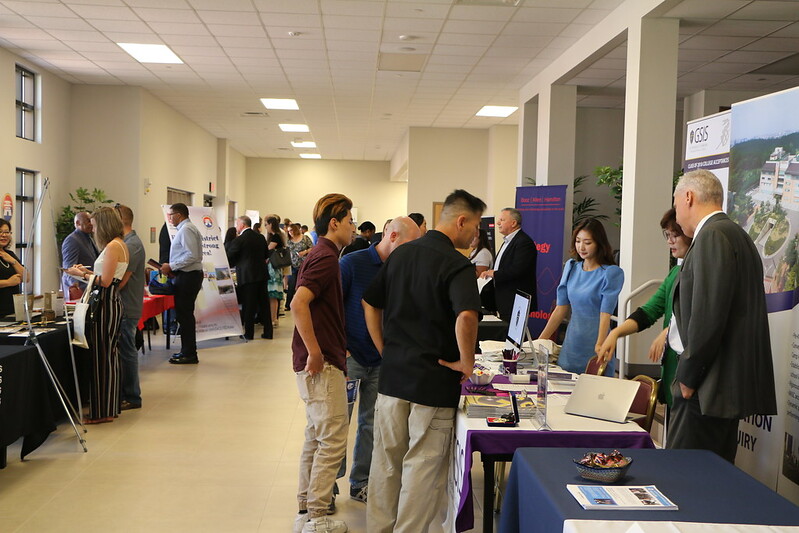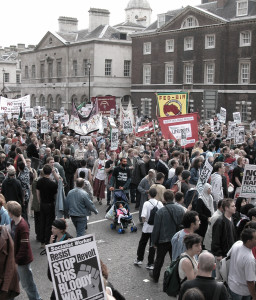From Eco-Oriented Life Extension to Reinventing Evolution

I spend a fair bit of time meeting with “practical visionaries.” I think you’ll enjoy these excerpts from the conversation I had with one of them this week. Tom Nodine managed to leapfrog from a typical insurance consultant to someone who is always thinking about how to extend both the length and the quality of human life. Now, he works with life insurance companies, who of course have a vested interest in longevity.
Our conversation touched on a whole range of topics starting with how switching to renewable energy can increase lifespan (which he’d asked about on the networking call where we met earlier in the month).
How Green Energy Can Increase Life Expectancy
Shel: I realized you didn’t get a great answer when you posed, repeatedly, your question about energy issues and life expansion on the call with Bill.
So I figured I would give my take on it. I don’t see myself as exactly an expert in that, although I’m kind of an expert in basic wide-ranging, holistic sustainability and regenerative. I don’t usually get down in dirty with specifics very much.
Number one. When you move to green energy to eliminate, not all, but many of the toxic work environments in the industry, the energy industry, such as coal mining, such as working in an oil refinery. Of course, you still have the issues with solar and wind. They certainly have impact in their construction and in their use of mineral resources and that sort of thing. So mining is something that’s still very much an issue. If you dig out lithium from somewhere.
Tom: I saw Greta Thunberg got towed away this morning. She was demonstrating against a Wind farm. So to your point. Wind apparently has some anti green aspects to it, as well.
Shel: Oh, it does! The birds are not very happy with our shift to wind, and right rightly so, and we need to figure out some way of letting the birds know. You know, “Danger, Will Robinson!” Warning. Don’t cross into that lane, beep, beep. But we don’t speak Bird well enough to have made that happen, I think. and then, of course, there’s like, you know, 8,000 bird languages that you’d have to master. There’s a challenge for chat GPT, yeah, so that’s one piece. Another piece is that the life expectancy expansion of the user is going to be much higher.
I have a gas stove right now, and I’ve been thinking that it may be time to see if we can convert that to an induction cooktop or something, because now that I’m in my sixties, I seem to be much more sensitive to the fumes from that stove than I was 20 years ago.
Tom: So you say, life expectancy of the user is higher?
Shel: Yeah, because there’s no toxic fumes involved.
Tom: Oh, user of an induction stoves. That sort of thing.
Shel: Versus a gas stove. Yeah. Now, of course, you have to look holistically.
Tom: Yep.
Shel: And you have to see, okay, where is the electricity coming for that stove? If it’s coming from a nuclear power plant or a coal fired fire plant, you’ve not made any progress except that you personally aren’t exposed to the fumes. So that’s that’s maybe the beginning of the answer.
Tom: Oh, thank you, that’s helpful. And do you mind if I ask you an even more broad question, because I know you, you focus at the in the broad space at the top level? What do you think of the notion of tying corporate activities to human life expectancy?
Shel: I think it’s a great idea. It very much dovetails with the work I’ve been doing to tie them into green and social change, and—
Tom: That has been my hope. My reaction to it, or the reason I did it is, I realized, that this seems to be a very fundamental thing that no one seems to be looking at, and I would imagine that perhaps implicitly behind almost everything. The majority of green activities as well, what we’re trying to do is help ourselves and other species to live longer.
Shel: In a broad context, yes. And if the earth lives longer, then the creatures on it live longer.
Tom: Right, exactly. And again, whether or not there’s carbon in the atmosphere, as George Carlin basically called out, you know the earth doesn’t care. It’s the people that are alive on the earth that care.
Shel: Cockroaches won’t care. They’ll survive anything. Bacteria. Yeah.
Tom: Exactly. Okay, and do you in any way find it threatening to greens or competing with greens or dysfunctional? Because I don’t! Last thing I want to do is distract from what I think is very, very solid and appropriate green activities, which I strongly support.
Why You Can’t Lump All Greens Together—And A Style Difference with Greta Thunberg
Shel: Okay. Well, first of all, you have to look at the greens as a category the way you would look at, say, the Christians, what does a Unitarian have in common with a Bible-thumping Baptist fundamentalist, not much—
Tom: Oh, I would say they both want to live longer.
Shel: Maybe, maybe not. Some of those millennialists, they’re waiting for the Rapture.
Tom: Yeah, you’re right. But moment by moment, I promise you they want to live longer.
Shel: But you know you have Greta protesting against wind power on one extreme. She is not going to be a convert to your way of thinking, no matter what you do. She’s an absolutist, and absolutely won’t compromise and probably would be a pain to work with. I have enormous respect for which she’s done, but I also recognize that she has a very limited worldview. She was 16 when she started. She’s probably 21 now, so there’s a lot more wisdom that will likely work its way down at some point. I mean, I see it in my own kid. I had a very, very strident younger child, who is now, at age 30, considerably less strident.
Tom: The world has a way of teaching us all, doesn’t it?
Shel: Yeah. And I was when I was that age, I was totally strident.
Tom: Yeah. If you don’t mind my complimenting you…
Shel: Go ahead.
Tom: You’ve done a lot over the years, you know. I’ve loved I’ve looked at the books that you’ve written from your first book on smoking way back, when which, by the way, is something that early on, I felt strongly about as well—
Shel: Oh, you really have gone back! That was 1980.
Tom: To Principled Profit. And all that you’re doing now on Guerrilla Green Marketing and Grassroots Marketing, and all that sort of stuff. It does kind of seem like there’s a trajectory that you have gone on the same dimension.
Shel: Yeah, Guerrilla Marketing to Heal the World is my tenth book. And the fourth in a series that started in 2003 with Principled Profit on business ethics, environmentalism, and social justice as business success strategies—as profitable enterprises.
Tom: That’s great. I mean, I love that stuff, and I haven’t read the books yet, anyway. But I think I get the gist of it.
Shel: Yeah, well, this would be the one to read. Most of what’s in the three leading up to this one is are in Guerrilla Marketing to Heal the World. Grassroots Marketing and Marketing without Megabucks, and my way early self-published book on marketing, are all kind of Marketing 101 books. How to write a press release, how to use good triggers in your ad copy, and that sort of thing. And they’re also all pretty old at this point.
Should Tom Publish a Book or Focus on Youtube?
Tom: Yeah, yeah. Well, do you mind if I ask you? How have you found the publishing route for your overall impact for your consulting business? For your life? Are you happy you did it?
Shel: Okay, I’m definitely happy I did it. But as far as material success, stemming directly from publication? Doesn’t happen. There’ll be 5 books a year where the authors can really kind of live off what they’re making. Maybe 50, not anywhere near the millions of books that are seeing print all the time, and but what it does when you have even one book, and I have 10.
Tom: Yeah.
Shel: You are taken seriously when you invite yourself to speak at conferences, you are taken seriously when your clients look you up on Google or prospects, you have an easier time getting meetings with important people. So if you see it as a 300-page-long business card, it’s a great, and and I actually a lot of my work is in the area of taking would-be authors, and making them successfully published authors, which is a long and involved and many-step process, and which I definitely recommend people not to on their own, because it is a mine field if you don’t know what you do.
Tom: Yeah, I started out with a topic of basically looking at technology, and how they’ll impact human life expectancy. And at the result of kind of a 2 year effort of interviewing experts on all this, and working with actuaries. And all this came to the conclusion that we’re all going to be living 10 years longer within the next 20 years. The average global life expectancy will go up pretty dramatically and not be talking about this. And so I actually figured, I really want to understand it. And so I wrote a book called Dead Reckoning that’s all about this and that book turned out to be, oh, 900 pages that I then cut down to 300 pages, and even then I realized, no one’s going to read this these days.
Shel: Wow!
Tom: It would have taken me well over a year to get it through a publisher. And at the end of it all, only a few people would read it. And so instead, I decided to go with a series of Youtube videos. And I don’t know whether that was a good decision or a bad decision. I mean, so far, one of my videos, the one on genetic and epigenetic testing I’ve got, 3,000 or so views on it. It’s not nothing. But you know Edward Sheeran has nothing to fear from me, for sure, and so I’m thinking that although I could publish it in a book, are videos a better way to go.
Shel: Well, I want you to think of this as a both-and, and not an either-or. There’s absolutely nothing that prevents a video superstar on Youtube—let’s just say for the moment you become one—from doing a book. In fact, there’s synergy there, because you can tell the people who watch your Youtube channel, “hey, I’ve got a book coming out. It’s a great present for you to buy for other people.”
How Does Increasing Longevity Affect the Business World?
Shel: I find it really interesting that you come out of the insurance industry to this, because insurance will play longevity 2 ways. The life insurers are delighted because it delays the payout, but the health insurers the annuity people, the retirement people, are maybe not so happy because it lengthens the number of years they’re paying out.
Tom: Let let me refine that understanding. So you’re absolutely right on the life insurance side. The incentives are completely aligned. You know they want people to live longer, for sure, both financially and otherwise. And that is a huge opportunity, because insurers right now are challenged in their customer relationships, sometimes considered collectors of premiums? There’s such an opportunity to change what their company is about, by helping their customers to live longer. So that is one big thing on the health side, though kind of 2 points. Once again, you’re absolutely right that the annuity people are realizing that if people are going to be living longer, we’re going to be underwater really quickly.” On the health insurance side, though the economics, actually turned out to be the other way. If you can help people to live longer healthfully, it actually helps them reduce their claims. And also the technology offers the prospect for reducing medical costs over time, which has not happened over the past 75 years. Increasing technology has actually been one of the causes of increased health care costs.
Shel: Yeah, whenever a GP has to have a CAT scan [machine] in their office. That’s expensive.
Tom: Exactly. CAT scans alone involved brillions of dollars. It’s ridiculous. So completely agree that that’s been the past. But there’s reason to believe that that may not be the future. So, anyway, yes, and it is a little bit odd that I came from the insurance industry. I mean, I spent years in innovation, in insurance, and looked at all kinds of things from driverless cars to artificial intelligence And, worked for Allstate doing all that, and it was great. But when I realized there’s new technologies like genetics, epigenetic tests, and other things that are coming down the pike that can really impact life expectancy, it kind of seems irrelevant to me thinking about driverless cars when there was something so much more germane for humanity to focus on, and so decided to really go in that direction.
Can’t Humans Just Relocate to Other Planets?
Shel: Yeah, well, it’s a big leap for somebody with your background because insurance people tend to be very narrowly focused, not seeing so much the big picture. And here you’re not only seeing the global big picture you’re seeing kind of a universal big picture, and I’ll just put my foot in my mouth, maybe, and speculate that you have at least explored what it might be like to start colonizing other planets.
Tom: I’m sorry. Say that once again.
Shel: You have at least explored the idea of what it might be like to have human colonies on other planets, even if it’s just by reading science fiction.
Tom: Absolutely. I’ve explored that idea and while I’m in favor of the space program, I’m not a fan of the idea of moving to Mars.
Shel: Yeah. Well, better to fix the planet we have, I think. But.
Tom: How badly would we have to screw up this planet before Mars or the moon becomes a better place for us to live.
Shel: Yeah, a barren rock with no atmosphere is not exactly my ideal.
Tom: Exactly. And I actually agree with those who say that holding Mars out as an alternative is really quite dysfunctional if it causes people to think credibly, which they shouldn’t, that there is an alternative to here.
Shel: Yeah, what is interesting to me about the whole space endeavor—and I actually, when NASA thought they were going to send a journalist to space, I wanted to be that journalist—what interests me is the way space travel could expand our horizons about what’s out there. Perhaps break down, not just the human-to-human xenophobia, but human-to-whatever-is-out-there xenophobia. When I first started reading science fiction, most of the books I read were very dystopian about all the invaders are coming with their lasers and they’re going to wipe us out. And then there was one book that I came across as a very early teenager, I don’t know, 13, 12, something like that. I don’t remember the name.
Shel: I think the author’s first name was Jack, where the aliens were treated as a gift, almost as like here’s how we can improve our species. [NOTE FROM SHEL: As I was editing the transcript, I remembered that it was Jack Williamson. I still don’t remember the title, and he was a prolific author.] Here’s how we can improve our communication, people that we can learn from who don’t happen to look like human bodies. And that was really kind of a revelatory book for me. I wish I remembered the author and the title, so I could recommend it to people, but since then I’ve come across many others with that worldview.
Tom: Hmm, well, I agree with your thesis. I mean taking a galactic perspective can only enhance our understanding of who we are, and therefore what we should do.
Shel: Yeah, okay. Yeah. But that doesn’t give us the license to say, Okay, we can just destroy the earth and go someplace, else.
How This Conversation might Lead to Collaboration
Tom: Exactly, exactly, exactly… And more broadly, Shel, I’m pleased to meet you. I sense that we are kindred spirits in thinking broadly about how business can impact our world, impact our lives and would welcome your collaboration, as I mentioned in the call. I really would like to be able to build a bridge between what I’ll call green activities and life extend activities, because I think that we’re moving in in much the same direction.
Shel: Yeah, and I think that that synergy is there. For some of the reasons I talked about at the very beginning of this call…
The Marriage of Science and Spirit in the Study of Evolution
Shel: And I’m actually reading a book right now that I think might be germane to this conversation and it’s another Chicago guy named Perry Marshall, and he wrote a book called Evolution, 2.0. And he talks a lot about epigenetic. He’s from what he calls a Young Earth Creationist Christian background, which is to say, I think, literal interpretation of the 7 days of creation—so raised not to believe in evolution at all, but with a tech background. He was an electrical engineer working on audio systems before he became a marketer. He kind of invented Google Adwords marketing the way we know it today.
Shel: And then he wrote a really impressive book that I reviewed several years ago, called 80/20 Sales and Marketing and it was all about the Pareto Principle. And his basic insight on that book which was worth the other 200 pages to go through was that the 80/20 is fractal. So you take your well performing 20% and you rinse and repeat, and then you take 20% of that 20%. You iterate that 5 or 6 times, and you have a super power.
Tom: Yeah, got it. Thank you very much. I’ll give Perry Marshall a look.
Shel: So the evolution book, which I’m about halfway through, the first half, which is a part I’ve just finished, is basically proving that evolution is not random noise or accidents. And I totally agree with him that you do not fix the system by introducing things that don’t work into it. But now he’s got to convince me that the Creator that he sees at the beginning of this is real, and that’s going to be a harder self for me, because my question is always going to be to him: Okay. So if there is an intelligent designer who put this entity there, how did it come about? Because somewhere along the way there has to be a first point.
Tom: Well, Shel, should you be interested in knowing my thoughts on this topic—you might, you might not—but I have thought rather deeply about it in technology and biology. It has led me to a very interesting place.
Shel: Sure. Go ahead!
Tom: I think in my Youtube videos, there’s one called is Evolving. And it basically goes through how, in fact, evolution is evolving very quickly to be more and more what’s called volitional evolution, where we, as humans are choosing the course of our evolution and the evolution of other species.
Shel: That goes back at least to plant hybridization, 3,000 years ago.
Tom: Absolutely, and is only accentuated now that we’re gaining capabilities and genetic engineering. So it’s it’s really a very interesting thing. So anyway, I’d also be personally interested if you have any views regarding the video channel. And you know the look and feel of the the videos we’re putting out.
Shel: Okay, I haven’t watched yet, but I will start with that one.
Tom: That’s kind of you. Thank you. It’s it’s called the Human Life Expectancy Channel on Youtube. And we put something out every week, and we’ll do until at least June, because we’ve got them produced already. There’s also another one there on energy technologies and how energy technologies might well impact human life expectancy, there’s others I’ve created but not yet published on restructuring the food chain, which, of course, is a big part of both greenness and human life expectancy, getting clean water to people and new water technologies, new transportation technologies, and all the things all those are coming up soon.
How Virtual Meetings Help the Planet
Shel: To interface this with the huge acceleration in the last 3 years in non-person-to-person/face-to-face, contacts such as we’re doing right now [online meetings].
Tom: Absolutely. Let’s hope that it cuts down on senseless carbon emissions from business travel.
Shel: Hopefully. Yeah. And I think the senseless carbon emissions from computer networks are going to be a lot lower number.
Tom: I’m sure that they will.
Shel: It’s not an insignificant number.
Tom: No, it’s not nothing, but it’s better, definitely, better.
Shel: It’s way better. Yeah. So if it’s my guess is, it’s probably a savings of roughly 90, 95% of the energy involved in moving people to meetings.
Tom: Yeah, that’s great. Well, Shel, I mean, is there anything you can imagine that I might be able to do for you? Connect?
Shel: I’m sure there is. I don’t yet have a handle on what that might be, and well, one thing actually is, I’m always looking for clients who want to build more social equity, capital and environmental capital into the core of their businesses that can be made to see that—again, into both-and, that you can have a business that is both doing right by the world, and a profitable business, and that you can build it into the core of the business, into all its products and services. If you if you haven’t yet watched my TEDx talk, I would say that’s a good 15-minute summary of what I’m talking about…
And I’m thinking, in the work you do, you might very well find that when you’re talking to insurers, for example, insurers will know of people who really want to do this and insurers can lower their costs. Also by backing companies that are not destructive to the environment and that are actually advancing social justice. And I’m talking when I say social justice, I’m talking about things like hunger, poverty, racism, climate change, war—“little easy things to fix.”
[Tom chuckles]
Shel: But with the exception of the recognition of climate change as a big problem, which is quite recent, only 150 years or so, all of those things have been with us since there were humans.
Tom: Or minus 5 years, depending upon who you’re talking about.
Shel: Well, the scientific consensus is there. There are the people who feed on stupid, untrue quote, news, unquote. You know, they’ve also been with us since the beginning of time. I think there are examples of propaganda in the Old Testament, if I remember correctly. There’s also that wonderful argument that Abraham has with God about if there are 100 good people, 50 people, 10 people, one person, will you save the village? So that’s essentially public relations. Maybe the first recorded public relations writing.
Tom: Cool, although I’ll bet it was a problem way before that.
Shel: Oh, I’m sure it was. That’s just the first documentation we have.
Tom: It’s it’s a rather universal human thing. I think.
Shel: Yeah, but it’s interesting, because the Old Testament—and I’m not a particularly religious person, I see myself as spiritual, and I certainly believe there are entities out there that are bigger than humans, and in their capabilities—and communicate with them regularly. But the Old Testament also has the first instance I’m aware of documenting nonviolent civil disobedience, which is what I see as the primary level lever for social change. Not civil disobedience, but nonviolent resistance in general, it doesn’t necessarily have to be civil disobedience. You have this very interesting scene where Pharaoh was telling the midwives for the Hebrews go out and kill the male babies, and they come back and say, “we’re so sorry they have babies so fast we can’t get there in time.” That’s, as far as I know, the first time that anybody talked back to a Supreme Ruler and got away with it and and changed the outcome.
Tom: So are these early examples of guerrilla marketing?
Shel: Well, yeah, I would say, yeah, marketing of the social change movement. Both the cases. Yeah. Abraham was definitely being a guerrilla marketer in his argument about how many souls were viable to save a city. And the midwives Shifra and Puah were definitely using a guerrilla approach. I don’t know if you could call it marketing.
Tom: Okay. Fair enough. Well, Shel, thank you very much. I really appreciate getting to know you better, and I appreciate you taking the time to get to know me a little better, too. I will definitely do the things you recommend. I will order your Guerrilla Marketing to Heal the World book and read it also look at Perry Marshall’s book and look at your TED Talk, which I haven’t yet done but would be happy to do.
Shel: Great. On the Going Beyond Sustainability site, you’ll find on the book page, there are links to a number of places to order it. One of them is me. In that way, you can get an autographed copy if you want one and another is IndyBound, which will hook you up with whatever independent bookstore you like to use.
Tom: So Amazon will not get me to Guerrilla Marketing?
Shel: Amazon will, but I prefer the people send their money to local bookstores, independents, rather than the one that’s trying to drive them all out of business.
Tom: Fine, I’m happy to do that, too. I don’t suppose you mentioned you as a possibility. Okay, is there any chance I can order one directly right now?
Shel: Sure. Let me get my cell phone, and I can take your credit card information.
[transaction details removed]
How to Find Shel’s and Tom’s Videos
Tom: In the meantime, I presume I can find your TED talk by just going to TED Talks and typing in your name?
Shel: It’s actually easier to go on my speaking page and find it there, because it is on the TED site but it’s really hard to find there. It’s not indexed, for some reason.
Tom: Okay. Can you send me a link to your speaking page?
Shel: Absolutely.
Tom: Please do. And in the meantime, yes, if you would kindly take a look at the human life expectancy channel, if you can, if if you’re so inclined, it would be great if you could subscribe to that, so you’ll get to see the new, videos as they come out and even more importantly, share whatever thoughts you might have. And, by the way, the negative thoughts are probably the more valuable.
Shel: Okay. I’ll open that up on my browser.
Tom: So if you could say, Hey, Tom, you are jumping off of a cliff here, don’t do this, or you know that sort of stuff. That’s the kind of feedback that I actually most need, and would appreciate at this point.
Shel: Yeah. And similarly, if you see any big holes to poke in my TEDx, please let me know.
Tom: Well, I gotta believe people have been poking if they’re going to poke since 2014. So I don’t know if I’m going to come up with anything new. But I’ll definitely look at it with interest.
Shel: Great. Cool and groovy. Well, this was fun, and you know there’s I think the ways that we might work together will evolve, using the word on purpose, over time.
Tom: Yeah, that’s great. That sounds great. Let’s do that and let’s just kinda be open to the opportunity.
Tom: But whatever case, real pleasure to meet you, Shel!
Tips on Booking a TEDx Talk
Shel: Likewise. And have you done a TEDx? You sound like you ought to have if you haven’t.
Tom: No, I have not I’d be wide open to it. But you know the opportunity hasn’t yet presented.
Shel: I don’t have any contacts for you. They’re all locally organized. But within Chicagoland, there’s probably at least 100 a year.
Tom: Yeah, I mean, that would be another great conversation if you’d be willing to have it. Which is how the heck do you get a TED Talk?
Shel: There are a couple of books out there [on getting a TED talk] that are not written by me that would be worth your while to read. I got mine by working with a local organizer and pitching her on various talks over a period of years. Right when I was starting to shift toward this work, she decided to organize an event, and I got in with a proposal. I already knew her. I’d been to a couple of the events she had produced. And I explained the overall concept and she said, “Yeah, let’s do that one.” So I don’t have any great secrets there except for persistence, and keep making—
Tom: The right person. Make the right pitch. If we’re modifying it. Right? Or finally finding out what pitch they’re looking for.
Shel: And TED talks don’t pay, by the way.
Tom: Oh, I had no expectation that they would, but they were—it’s possible that you could give me more advice on the find-the-right-person piece. Is all of that well-known? If I type in TEDx Chicago, am I going to find the contact and give her a call.
Shel: Probably, but you might have to play with your search query. I might do TEDx Illinois and TEDx Indiana, and just see what comes up. I mean, I imagine you’d be willing to drive 3, 4 hours to go give a TEDx and have that credential.
Tom: Of course.
Shel: So, yeah. Or TEDx near me. See what comes up. I don’t know how many are doing live events these days, and how many are doing virtual, or how many just folded their tents in the pandemic. But yeah, if this is sort of thing where you could get, you know, an intern or somebody in the Philippines to go do some research for you.
Tom: Yeah, thank you. I’ll look into that, too, because you’re right. I mean, I would love to do a TEDx, and I’ve certainly got a concept that’s broad enough and big enough to merit consideration.
Shel: And then the other thing I would say is, whenever one is convenient to you, go attend it, watch the sorts of things that work, and be also aware that if you get a gig that there’s significant time upfront because there’s coaching involved that is actually really helpful.
Tom: Yeah. Good.
Shel: Yeah, I mean, I’m a pretty experienced speaker, but I found that I benefited greatly from the coaching I got before my TEDx and before my Pecha Kucha, which is a different format where you have 20 slides in 6 minutes, 20 seconds each slide yeah, that’s one you—
Tom: Yikes. Yeah.
Shel: —don’t want to do without scripting. I normally speak off, not off-the-cuff, but I speak without a formal script, but for the TEDx and the Pecha Kucha, in order to fit the format, I scripted everything I was going to say.
Tom: Sounds great, thank you. Sure. I’ll look into that as well.
Shel: You’re welcome. All right!
Tom: Well, let’s keep in touch, and again look forward to hearing back from you. If you have any thoughts, and I suspect that, based on all I read, I may have a few things to come back to you with as well. Great, Shel.
Shel: Great.
Shel: All right! Thanks! Oh! And let me just grab the transcript before we exit, and I’ll send it to you.
Tom: Thanks very much. See you again soon.

